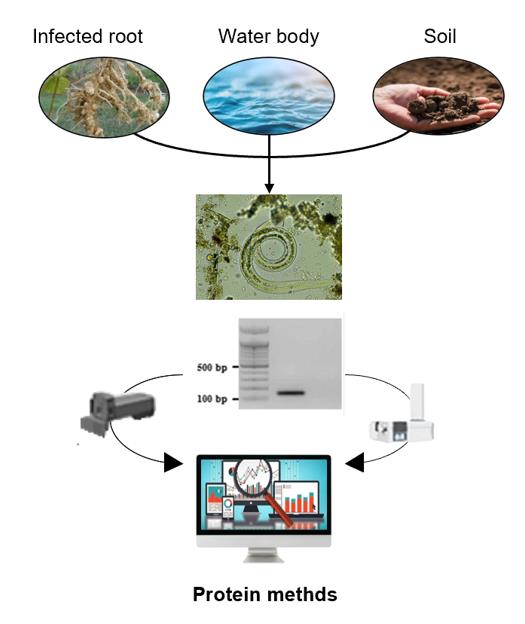Protein sequence, mass-to-charge ratio, and immunological techniques focus on using unique protein composition and structure to describe nematode species. Due to the redundancy of the genetic code, proteins provide a reduced vocabulary compared to DNA. However, the alphabet is much more complex, utilizing more than 20 characters compared to four DNA bases. In addition, protein structure and post-translational modifications increase the potential diversity that can be used to define nematode species and facilitate identification.
Lifeasible is a leading provider of comprehensive, high-quality services for plant sciences. We provide detection of plant nematodes based on protein analysis for research purposes to customers worldwide. We look forward to working with our customers to discover the secrets of life sciences.
 Fig.1 Protein methods with their associated experimental setup.
Fig.1 Protein methods with their associated experimental setup.
Lifeasible provides fast turnaround, high-quality services at competitive prices for customers worldwide. Our advanced technical platforms can help our clients solve the problems they may encounter in research based on years of experience. If you are interested in our services or have any questions, please feel free to contact us or make an online inquiry.
Lifeasible has established a one-stop service platform for plants. In addition to obtaining customized solutions for plant genetic engineering, customers can also conduct follow-up analysis and research on plants through our analysis platform. The analytical services we provide include but are not limited to the following:
STU-CRISPR System Improves Plant Genome Editing Efficiency
April 19, 2024
Application of Exosomes in Facial Beauty
April 12, 2024